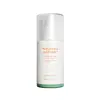What's inside
What's inside
 Key Ingredients
Key Ingredients

 Benefits
Benefits

 Concerns
Concerns

No concerns
 Ingredients Side-by-side
Ingredients Side-by-side

Water
Skin ConditioningPropanediol
SolventNiacinamide 4%
SmoothingTranexamic Acid 4%
AstringentButylene Glycol
Humectant1,2-Hexanediol
Skin ConditioningPyrus Communis Fruit Extract
Skin ConditioningSodium Polyacryloyldimethyl Taurate
Emulsion StabilisingEthylhexylglycerin
Skin ConditioningPolyglyceryl-10 Laurate
Skin ConditioningMadecassoside
AntioxidantCentella Asiatica Extract
CleansingAsiaticoside
AntioxidantAscorbic Acid
AntioxidantAsiatic Acid
Skin ConditioningMadecassic Acid
Skin ConditioningSodium Ascorbyl Phosphate
AntioxidantWater, Propanediol, Niacinamide 4%, Tranexamic Acid 4%, Butylene Glycol, 1,2-Hexanediol, Pyrus Communis Fruit Extract, Sodium Polyacryloyldimethyl Taurate, Ethylhexylglycerin, Polyglyceryl-10 Laurate, Madecassoside, Centella Asiatica Extract, Asiaticoside, Ascorbic Acid, Asiatic Acid, Madecassic Acid, Sodium Ascorbyl Phosphate
Water
Skin ConditioningNiacinamide
SmoothingGlycerin
HumectantSodium Polyacrylate
AbsorbentTrilaureth-4 Phosphate
EmulsifyingButylene Glycol
HumectantParfum
MaskingTricholoma Matsutake Extract
Skin ConditioningHexylresorcinol
AntimicrobialRetinol
Skin ConditioningTocopheryl Acetate
AntioxidantGlycyrrhiza Glabra Root Extract
BleachingCitrus Limon Fruit Extract
MaskingCitrus Aurantium Dulcis Fruit Extract
MaskingVaccinium Myrtillus Fruit/Leaf Extract
AstringentSaccharum Officinarum Extract
MoisturisingAcer Saccharum Extract
Skin ConditioningAloe Barbadensis Leaf Juice
Skin ConditioningHydrolyzed Soy Protein
HumectantCitric Acid
BufferingLeuconostoc/Radish Root Ferment Filtrate
AntimicrobialSodium Ascorbyl Phosphate
AntioxidantCI 77891
Cosmetic ColorantMica
Cosmetic ColorantCaramel
Cosmetic ColorantSodium Metabisulfite
AntioxidantSodium Sulfite
PreservativeSodium Benzoate
MaskingPEG-12 Dimethicone
Skin ConditioningCaprylic/Capric Triglyceride
MaskingEthylhexylglycerin
Skin ConditioningPotassium Sorbate
PreservativePropylene Glycol
HumectantPhenoxyethanol
PreservativeButylphenyl Methylpropional
PerfumingLinalool
PerfumingLimonene
PerfumingHydroxycitronellal
PerfumingCitronellol
PerfumingAlpha-Isomethyl Ionone
PerfumingWater, Niacinamide, Glycerin, Sodium Polyacrylate, Trilaureth-4 Phosphate, Butylene Glycol, Parfum, Tricholoma Matsutake Extract, Hexylresorcinol, Retinol, Tocopheryl Acetate, Glycyrrhiza Glabra Root Extract, Citrus Limon Fruit Extract, Citrus Aurantium Dulcis Fruit Extract, Vaccinium Myrtillus Fruit/Leaf Extract, Saccharum Officinarum Extract, Acer Saccharum Extract, Aloe Barbadensis Leaf Juice, Hydrolyzed Soy Protein, Citric Acid, Leuconostoc/Radish Root Ferment Filtrate, Sodium Ascorbyl Phosphate, CI 77891, Mica, Caramel, Sodium Metabisulfite, Sodium Sulfite, Sodium Benzoate, PEG-12 Dimethicone, Caprylic/Capric Triglyceride, Ethylhexylglycerin, Potassium Sorbate, Propylene Glycol, Phenoxyethanol, Butylphenyl Methylpropional, Linalool, Limonene, Hydroxycitronellal, Citronellol, Alpha-Isomethyl Ionone
 Reviews
Reviews

Ingredients Explained
These ingredients are found in both products.
Ingredients higher up in an ingredient list are typically present in a larger amount.
Butylene Glycol (or BG) is used within cosmetic products for a few different reasons:
Overall, Butylene Glycol is a safe and well-rounded ingredient that works well with other ingredients.
Though this ingredient works well with most skin types, some people with sensitive skin may experience a reaction such as allergic rashes, closed comedones, or itchiness.
Learn more about Butylene GlycolEthylhexylglycerin (we can't pronounce this either) is commonly used as a preservative and skin softener. It is derived from glyceryl.
You might see Ethylhexylglycerin often paired with other preservatives such as phenoxyethanol. Ethylhexylglycerin has been found to increase the effectiveness of these other preservatives.
Niacinamide is a multitasking form of vitamin B3 that strengthens the skin barrier, reduces pores and dark spots, regulates oil, and improves signs of aging.
And the best part? It's gentle and well-tolerated by most skin types, including sensitive and reactive skin.
You might have heard of "niacin flush", or the reddening of skin that causes itchiness. Niacinamide has not been found to cause this.
In very rare cases, some individuals may not be able to tolerate niacinamide at all or experience an allergic reaction to it.
If you are experiencing flaking, irritation, and dryness with this ingredient, be sure to double check all your products as this ingredient can be found in all categories of skincare.
When incorporating niacinamide into your routine, look out for concentration amounts. Typically, 5% niacinamide provides benefits such as fading dark spots. However, if you have sensitive skin, it is better to begin with a smaller concentration.
When you apply niacinamide to your skin, your body converts it into nicotinamide adenine dinucleotide (NAD). NAD is an essential coenzyme that is already found in your cells as "fuel" and powers countless biological processes.
In your skin, NAD helps repair cell damage, produce new healthy cells, support collagen production, strengthen the skin barrier, and fight environmental stressors (like UV and pollution).
Our natural NAD levels start to decline with age, leading to slower skin repair, visible aging, and a weaker skin barrier. By providing your skin niacinamide, you're recharging your skin's NAD levels. This leads to stronger, healthier, and younger looking skin.
Another name for vitamin B3 is nicotinamide. This vitamin is water-soluble and our bodies don't store it. We obtain Vitamin B3 from either food or skincare. Meat, fish, wheat, yeast, and leafy greens contain vitamin B3.
The type of niacinamide used in skincare is synthetically created.
Learn more about NiacinamideSodium Ascorbyl Phosphate is a form of Vitamin C. It is the salt of ascorbic acid.
This ingredient is more gentle than ascorbic acid. It is also more stable when exposed to light and oxygen.
Vitamin C helps reduce redness, improve skin texture, reduce the effects of aging, reduce the visibility of dark spots, and brighten skin.
Your skin uses Vitamin C to produce collagen and collagen production plays a role in having a strong skin barrier and plump skin. As an antioxidant, this ingredient also helps reduce the signs of aging such as fine-lines and wrinkles.
VItamin C helps brighten skin by blocking the process of skin darkening.
In a 2011 study, Sodium Ascorbyl Phosphate was found to have antibacterial properties. This may help treat acne.
Read more about other types of Vitamin C:
Learn more about Sodium Ascorbyl PhosphateWater. It's the most common cosmetic ingredient of all. You'll usually see it at the top of ingredient lists, meaning that it makes up the largest part of the product.
So why is it so popular? Water most often acts as a solvent - this means that it helps dissolve other ingredients into the formulation.
You'll also recognize water as that liquid we all need to stay alive. If you see this, drink a glass of water. Stay hydrated!
Learn more about Water